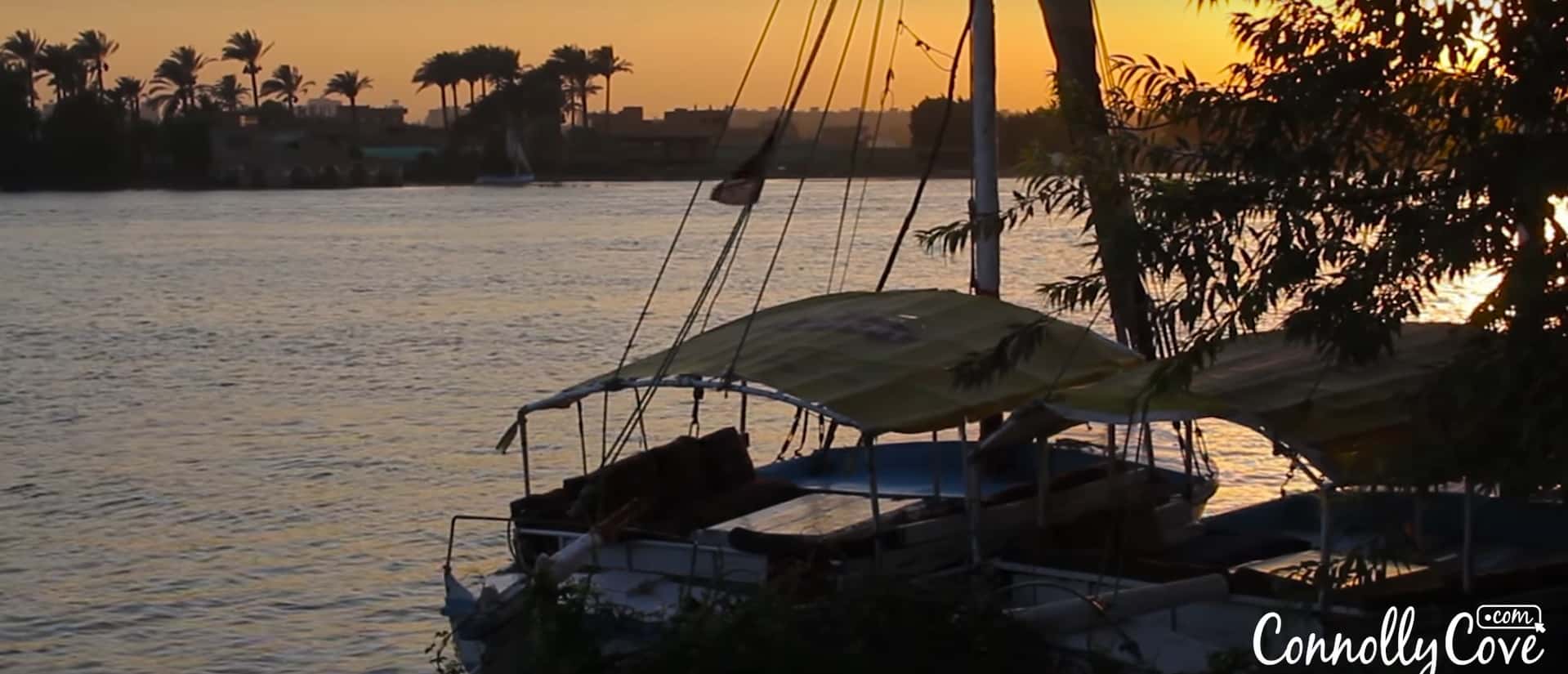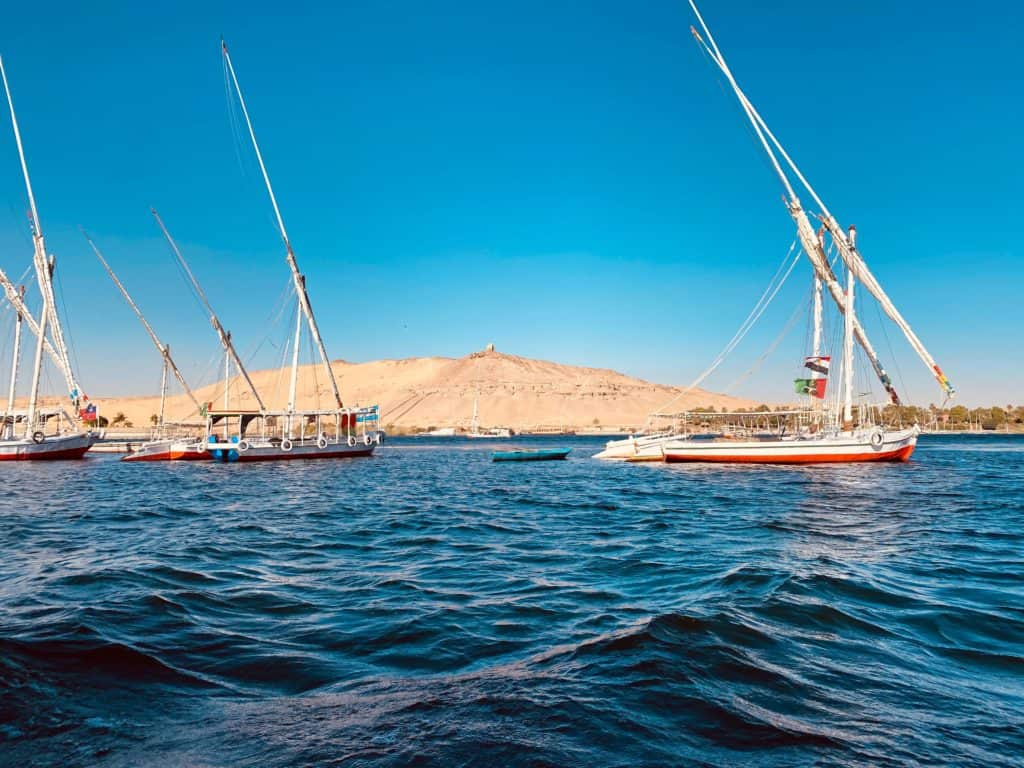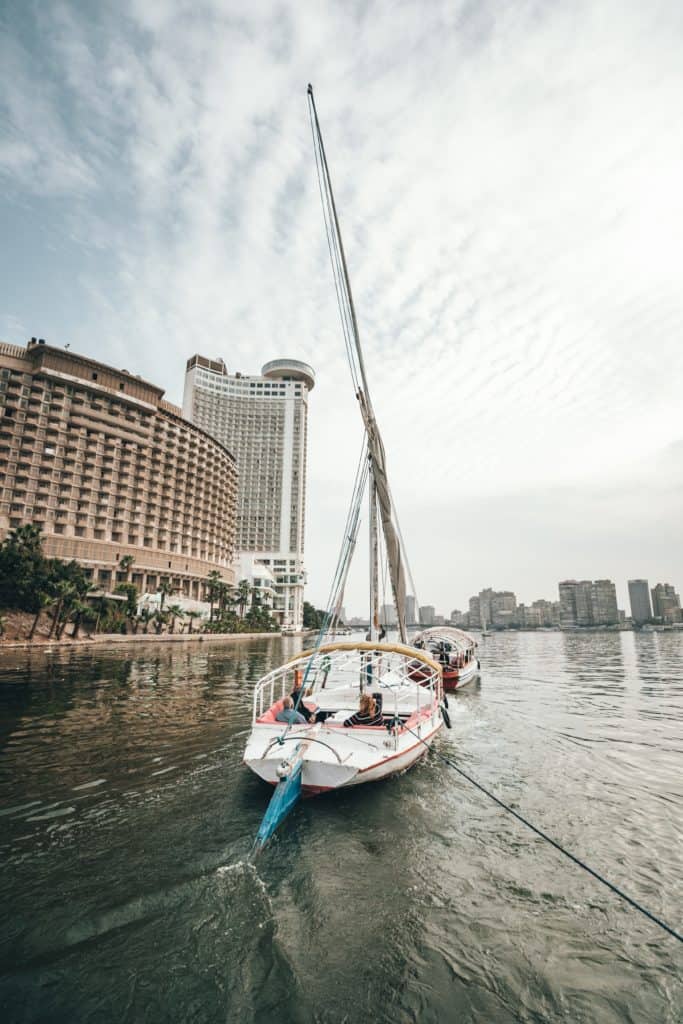The Implication of the Coursing Nile River through Egypt

Updated On: April 17, 2024 by Salma Ihab
Watching coursing rivers is exhilarating. You excitedly watch the constantly changing water, and you know that the interminable drops aren’t going to stay in their place forever.
Rivers can witness stories while flowing around the world. However, some rivers have their own stories, including the Nile River. It is one of the longest and most significant rivers in North Africa.
Aside from looking quite beautiful, it has seen tales as old as history, for it is considered one of the ancient rivers worldwide. This river has been passed by some prevailing figures in the world’s history.
It has always been part of great political and economic deals. You will enjoy a mind tour of the history and significance of the Nile River.

The History of the Nile River
The Nile River is not only a substantial river that has traversed Africa, but it was also one factor in the civilisation of Egypt. It has been playing a significant role in the history of Egypt since ancient times.
Above and beyond, it is also one of the most ancient rivers that the world has ever come to know. It is famous for being the longest river in the world. It passes through most countries of North Africa. In Ancient Egypt, the Nile River was called Iteru. However, the name”Nile” comes from a Greek word, Neilos, which means the valley.”Above and beyond, it is also one of the most ancient rivers that the world has ever come to know. It is famous for being the longest river in the world. It passes through most countries of North Africa. In Ancient Egypt, the Nile River was called Iteru.
The Nile’s history can form a long timeline, for it has existed since the Stone Age. Yes, it is that old. The Egyptian civilisation came into being right by the shores of the river. It played a significant role in the foundation of this great culture.
Egypt was originally a deserted area. It was a large desert landscape known as Sahara in Arabic. It was still inhabited, but there were more than a few scattered oases in which no one seemed to care to reside. Without the Nile, the land of Egypt was a Saharan open space where dust storms could freely play around. That is precisely when the story of the Nile River surfaced. It started in the Western Desert of Egypt.
The Nile River’s Significance to Egypt
The Nile’s history includes Egypt’s becoming a significant part of the world, for most of its population started resting along its shores. The river courses throughout most of the cities in Egypt and to the north of Aswan. It does not stop there; it keeps on flowing, pouring through the lands of Libya and the Gulf of Sidra.
“One of the Greek historians once said: “Egypt was the gift of the Nile” When the Ancient Egyptians started building up the land of Egypt, they respected the Nile. Mainly because they were aware of the significance of the Nile River, and they even worshipped the Nile for rituals that solely belonged to them. Hapi was the Nile god they believed in. They prayed every year to god Hapi during the flooding of the Nile River. It was the time when they grew crops.”
“The significance of the Nile River also lies in its provision of life and civilisation to Egypt in many ways. A blessing was also trending among the Egyptians: ” May you always drink from the Nile” The Ancient Egyptians used the Nile to get food from the fish. Besides, they used the mud that came from the riverbanks; they used it for bricks and papyrus. That was how they got themselves boats and books and coped with the rest of the world.”
Religion in Ancient Egypt
The Ancient Egyptians had their own religion, which was highly related to the Nile. Their religion was all about the Nile. The Nile was a god to them, God Hapi. They believed that Hapi was the reason behind the flood that took place every year. The Ancient Egyptians respected the Nile as the reason for their civilisation. On the other side, part of that respect was because the Nile was God Hapi who helped provide them with life. For them, God Hapi came every year, flooding their lands so they could grow crops and cultivate.
The God of the Nile (Hapi)
According to the Ancient Egyptians’ beliefs and rituals, God Hapi looked like a human being; however, they had slightly different illustrations. Hapi was neither a female nor a male god; he was an intersex person. Hapi had the features of both genders; he had a large belly and sagging breasts.
“That depiction conveyed an important message; the female part of Hapi was a symbolisation of being caring that he cultivated the harvest. On the other hand, the male part was for being a compassionate predecessor who balanced the universe. Those beliefs made Hap” The father of Gods” according to the Ancient Egyptians.”
To be more precise, the Ancient Egyptians did not regard Hapi as a god of the Nile itself. The flood event was the Egyptians’ belief that Hapi was the God of. Moreover, they also thought that Hapi was a friend of two other Egyptian gods: Geb, the God of the earth, and the Lord of Neper, the God of the grains.
The arrival of Hapi took place during the annual flood of the Nile. The flood was the reason that the land of Egypt was fertilised. After being once a desert, Hapi came to nourish it, so he was believed to be a symbol of fertility.
Other Representations of God Hapi
The Ancient Egyptians illustrated God Hapi as an intersex human being. However, they linked other attributes to their God; those attributes varied from one region to another.
God Hapi’s skin was either green or blue, for it represents the colour of the water. That was a general belief that was all across Egypt. Conversely, folks of Lower Egypt believed that the papyrus plants embellished God Hapi and that frogs found him very approachable. This notion came from the fact that frogs and that specific type of plants surrounded people in Lower Egypt.
The Nile also contained a bunch of crocodiles and a lotus, but that was mainly in Upper Egypt. Successively, their surroundings impacted their depiction of God Hapi as well, thinking that those symbols were all about his presence.
In most Ancient Egyptian illustrations, God Hapi usually held different kinds of offerings, either food or water. That illustration of having water was mainly all about being the giver of the bliss called water. The pictures usually involved God Hapi pouring water, a representation of being a ceaseless supporter.
On the other side, during the Nineteenth reign, those representations changed into a bit of twisted belief. God Hapi, during that time, was portrayed as two different figures. Those figures held the long stems of two plants and tied them together. Logically, those two plants were a metaphor for Lower and Upper Egypt.

Interesting Facts about the Nile River
The Nile’s history happens to have a handful of great tales to tell. Luckily, they lived long enough for everybody to know about them. Conversely, there are a handful of facts about the Nile other than its being the longest river in the world and once a god.
Do you know that the Nile River flows to the Mediterranean Sea? Well, most of the people have no idea either. Right before pouring into the Mediterranean Sea, the river divides into two branches. These branches flow in two different directions; the Rosetta Branch courses to the west while the Damietta Branch courses toward the east. Both branches pour into the Mediterranean Sea at the end.
Another fact that most people don’t know about is the source of the Nile River. Rivers tend to have more than one source, or they wouldn’t flow persistently, right? Conversely, two of the primary sources of the Nile River are Lake Tana and Lake Victoria. Each of them flows to pour into a different branch. Lake Tana pours into the Blue Nile branch, while Lake Victoria pours into the White Nile Branch.
You may have realised the fact that this river has gotten crocodiles. God Hapi was usually depicted that way. Well, what may be interesting here is that they are abundant. There are a lot of crocodiles in the Nile, even more than people know about. Besides, these crocodiles happen to be the largest ones all around Africa as well. Above and beyond, crocodiles are not the only animals around; there are also hippopotamus frogs, turtles, baboons, mongooses, and several species of birds.
Read more Facts about the Nile River.
The Nile is a fantastic river you shouldn’t miss in Egypt or any other country around Africa. Besides, there are other exciting places around the Nile to visit in Egypt, including Downtown Cairo. You wouldn’t want to miss this out.
Have you ever visited the Crocodiles of the River Nile? Let us know in the comments below.
More Great Egypt Blogs by ConnollyCove: Egyptian Food – Blended Cultures | Must-See Places in Egypt | National Museum of Egypt Civilisation | North Coast Egypt






